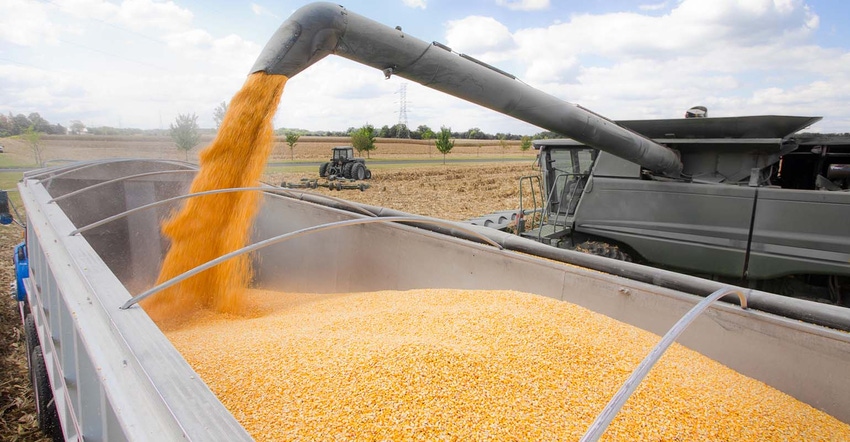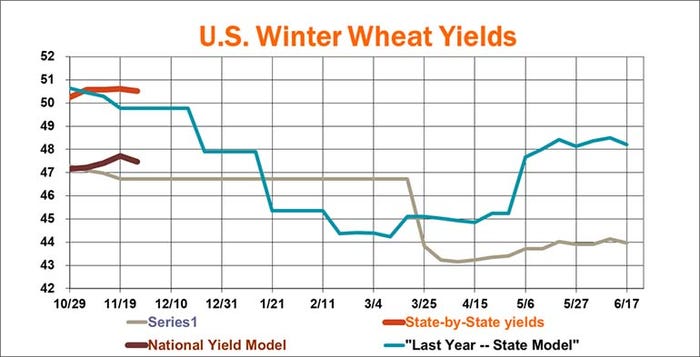
As another week passes, the U.S. corn and soybean harvests inch toward completion, with southern row crops also making some inroads, according to the latest USDA Crop Progress report, which covers progress through November 25. The 2018/19 winter wheat crop is nearly planted, meantime, with the pace of emergence not far behind.
Corn harvest reached 94% completion last week, up from 90% the prior week. This year’s pace matches 2017’s pace exactly but remains slightly behind the five-year average of 96%. USDA has marked four of the top 18 production states as effectively complete, including Illinois, Missouri, North Carolina and Tennessee. Harvest progress for the rest of the top 18 production states are all at least 80% complete at this time.
“Snow didn’t slow corn combines too much in the Dakotas, where farmers made some progress but still remain well behind average,” according to Farm Futures senior grain market analyst Bryce Knorr. “Wet conditions in Arkansas, Missouri and Kentucky have soybean harvest lagging by double digits, suggesting losses are likely when USDA updates production estimates Jan. 11.”
Soybean harvest also reached 94% completion last week, up from 91% the prior week. This year’s pace remains a bit behind 2017’s pace of 99% and a five-year average of 98%. Illinois and South Dakota lead the way at 100% completion. Each of the other top 18 production states are at least 83% complete, except for North Dakota (64%).
Winter wheat planting made incremental progress last week, moving from 93% complete the prior week to 95% complete as of November 25. That’s slightly behind 2017’s pace and the five-year average, both at 99%. Another 86% of the crop is emerged, also moderately behind 2017 (91%) and the five-year average (92%).
Winter wheat crop condition slipped a point, moving from 56% in good-to-excellent condition the week prior down to 55%. Analysts had expected USDA to leave quality ratings unchanged this week. Another 33% of the crop is rated fair (down a point from the week prior), with the remaining 13% rated poor or very poor (up two points from the week prior).
“Winter wheat ratings slipped last week as USDA put out its final Crop Progress report of the season,” Knorr says. “Though average yield potential fell only one or two tenths of a bushel nationwide, results were mixed regionally. All of the states growing soft red winter wheat included in the report experienced lower ratings. Wet conditions that delayed seeding were a factor.”
Though hard red winter wheat conditions in Kansas and Oklahoma improved, Knorr says planting is likely over after an early start to winter, including widespread snow in Kansas.
“Our models project yield potential ranging from 47.5 to 50.5 bushels per acre nationwide.,” he says.


Other crop progress of note includes:
Sorghum harvest reached 89%, up from 80% the week prior.
Cotton harvest reached 70%, up from 59% the week prior.
Peanut harvest reached 91%, up from 86% the week prior.
About the Author(s)
You May Also Like






